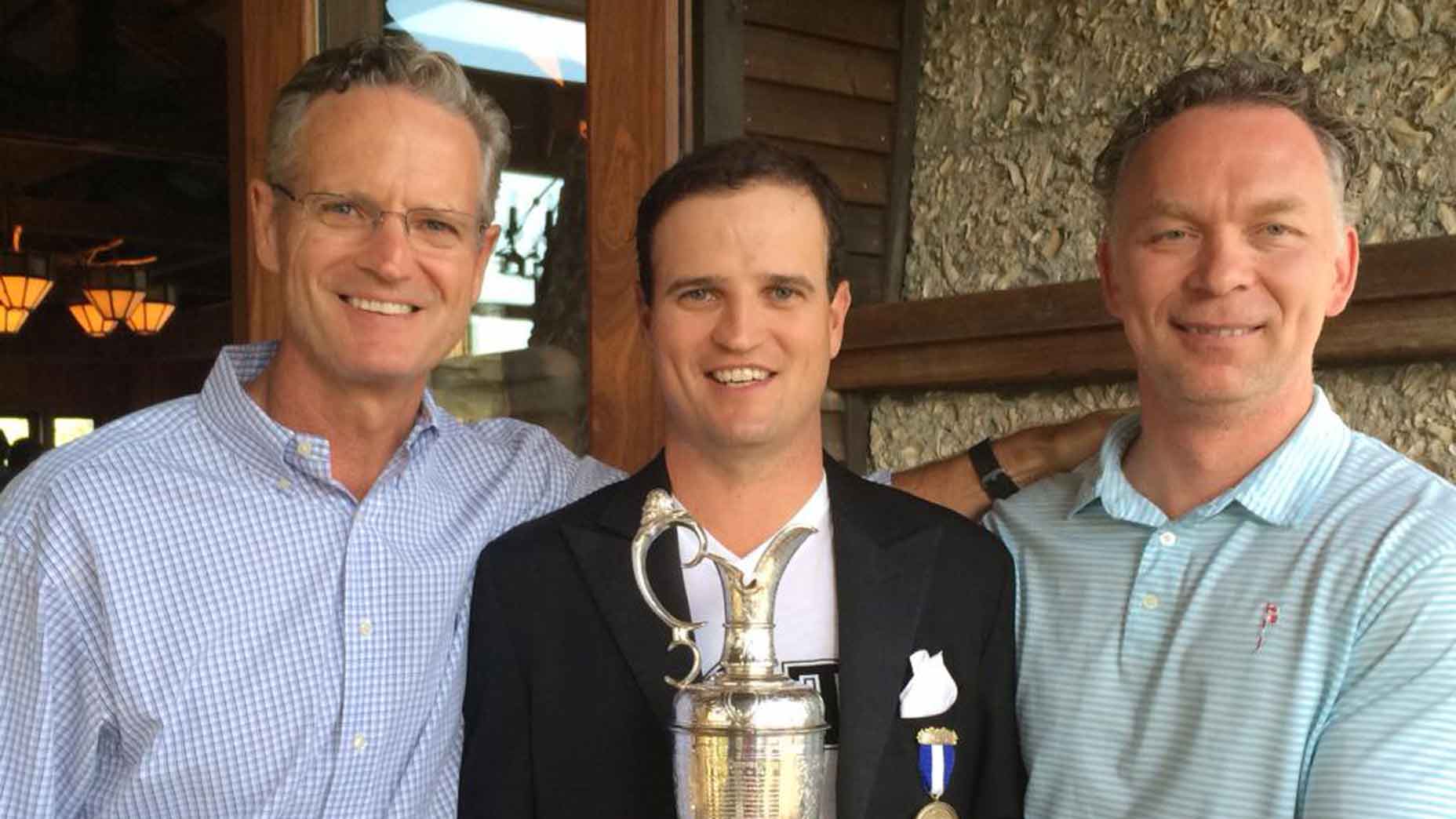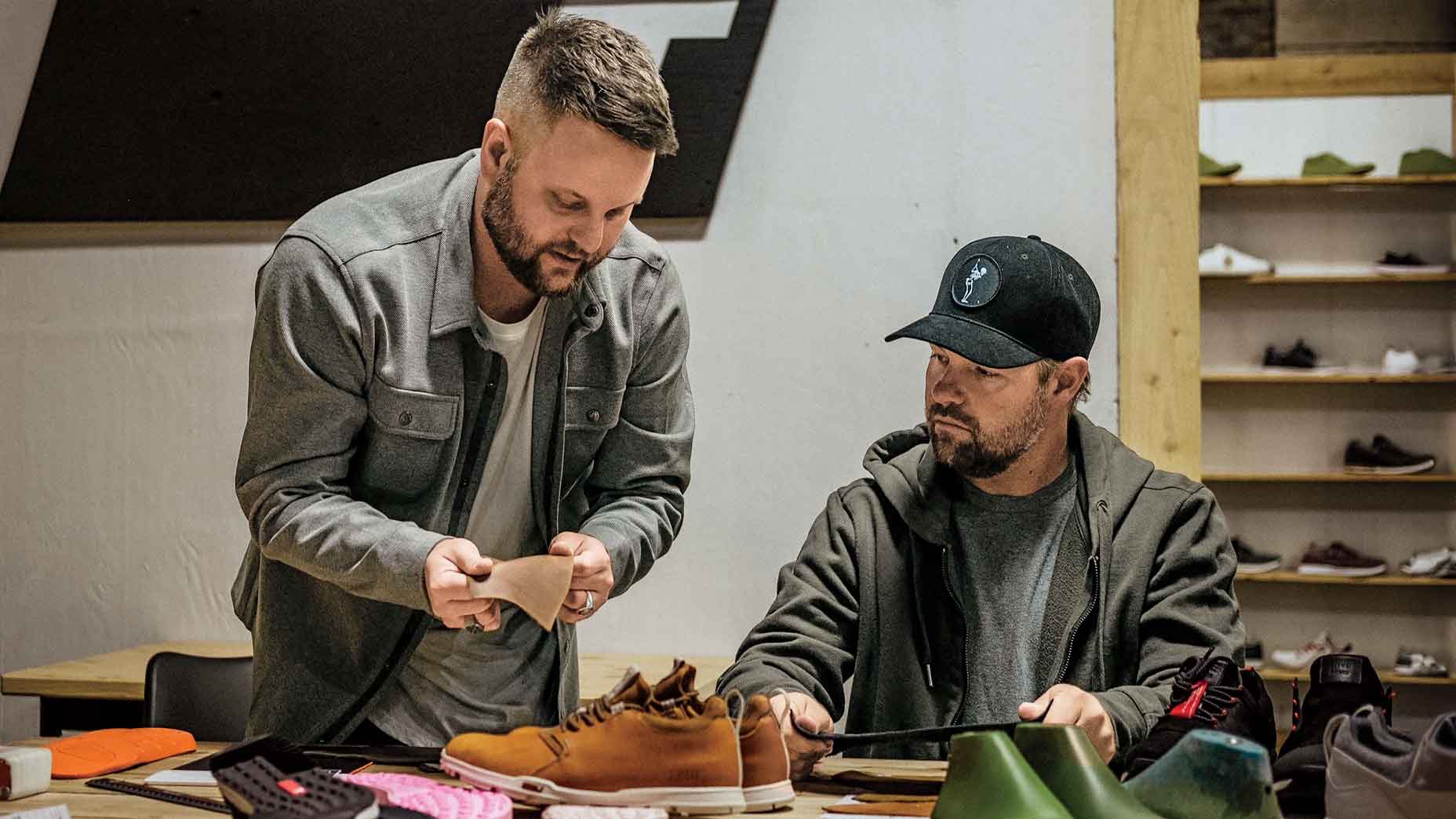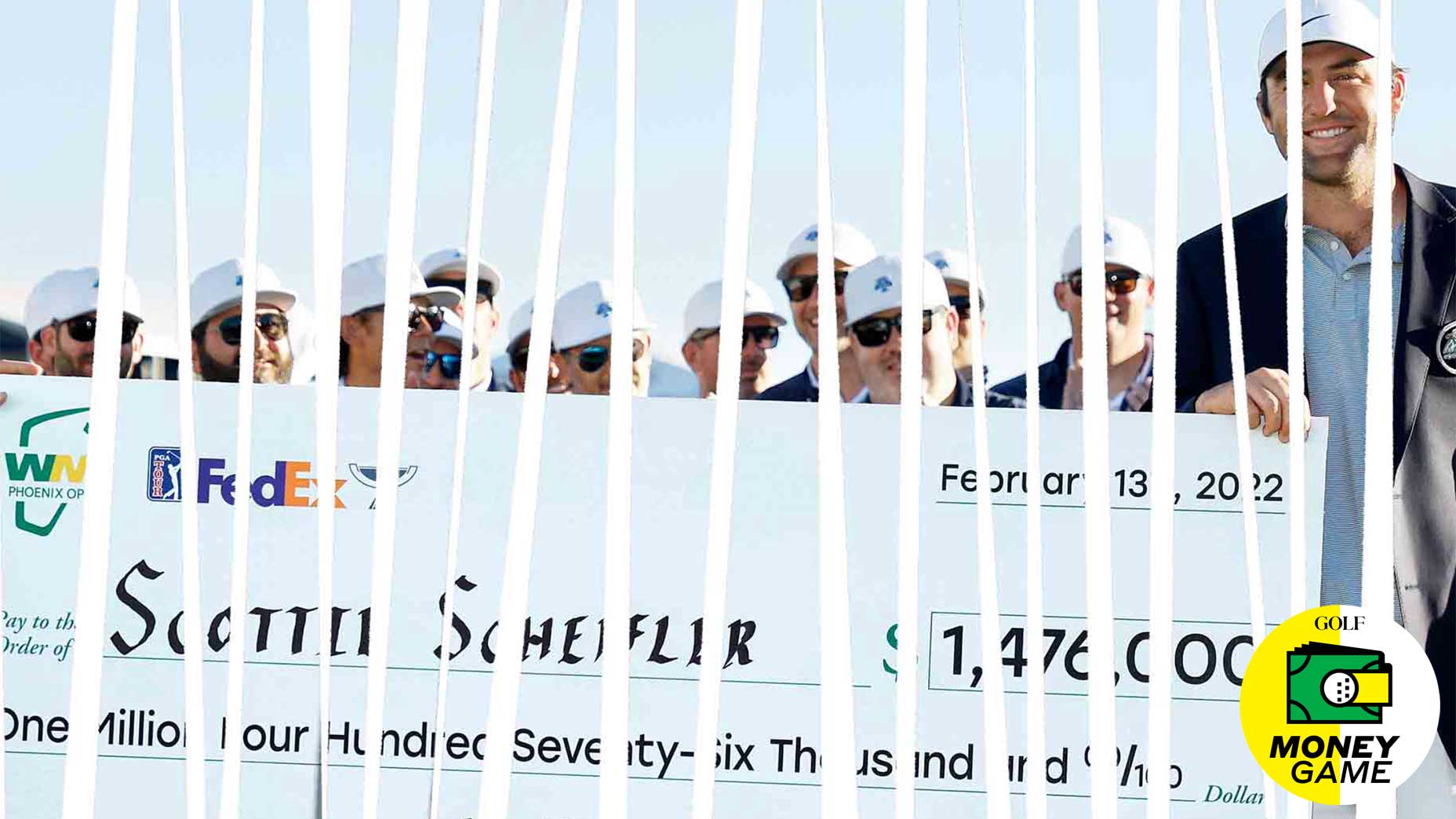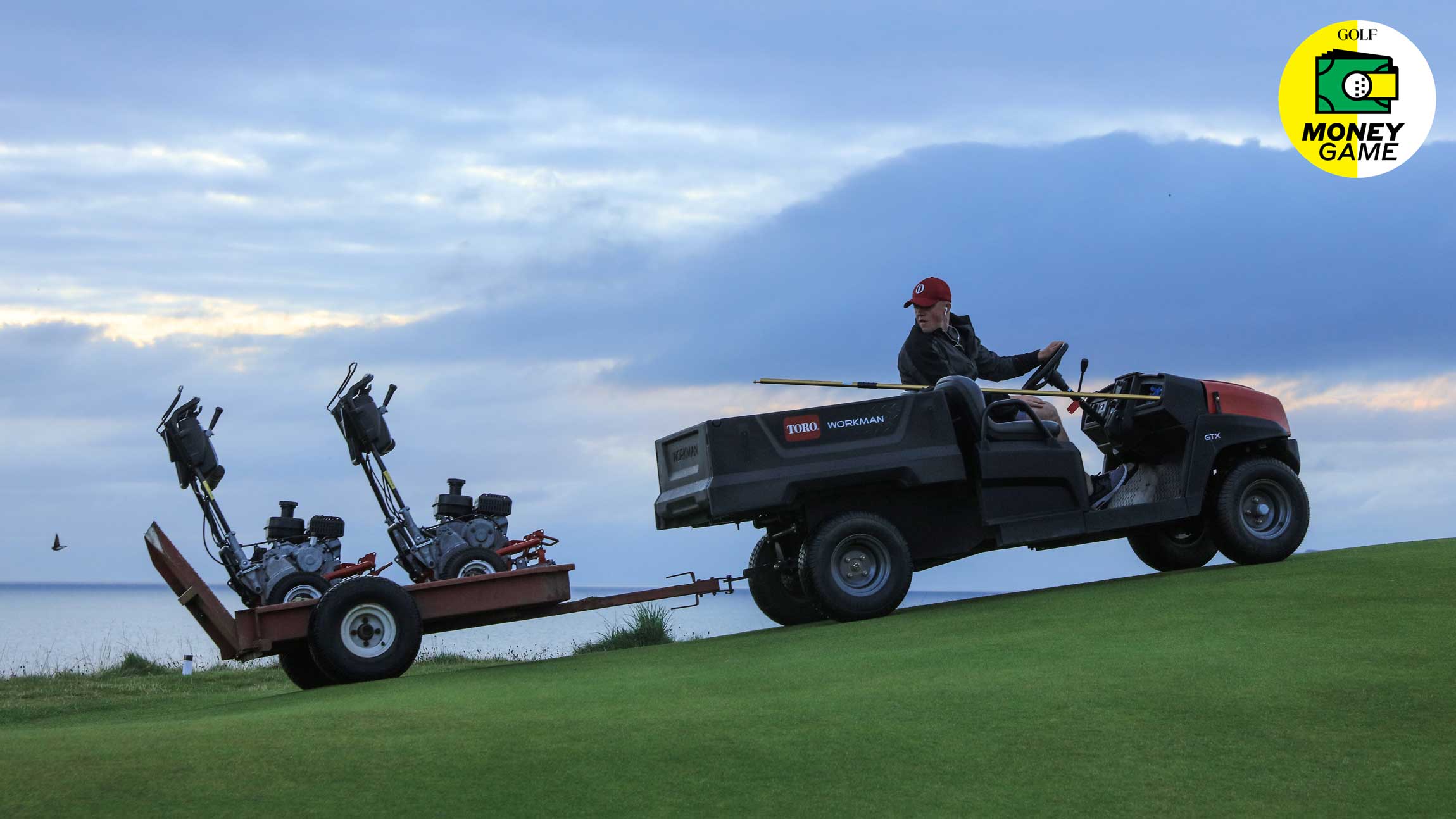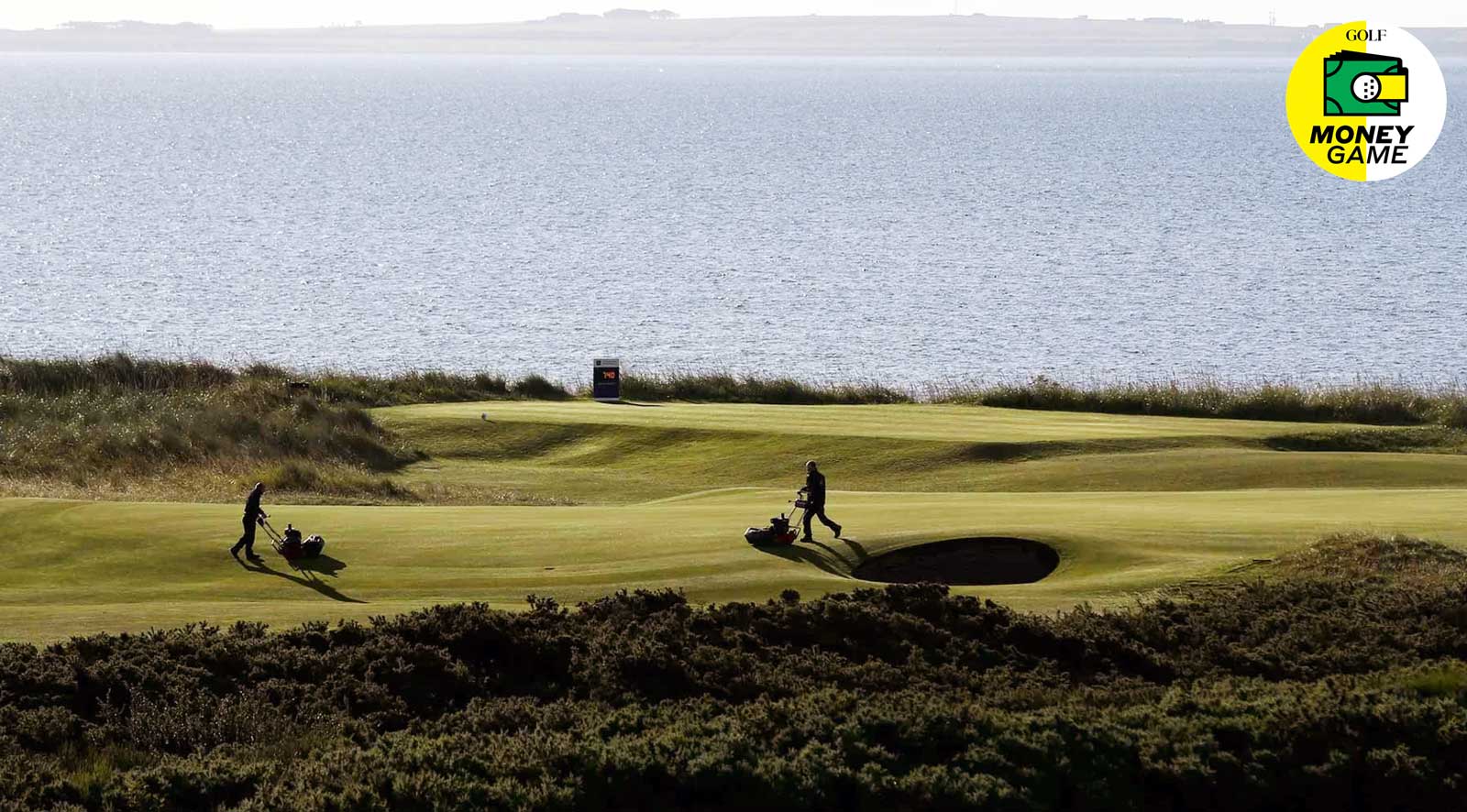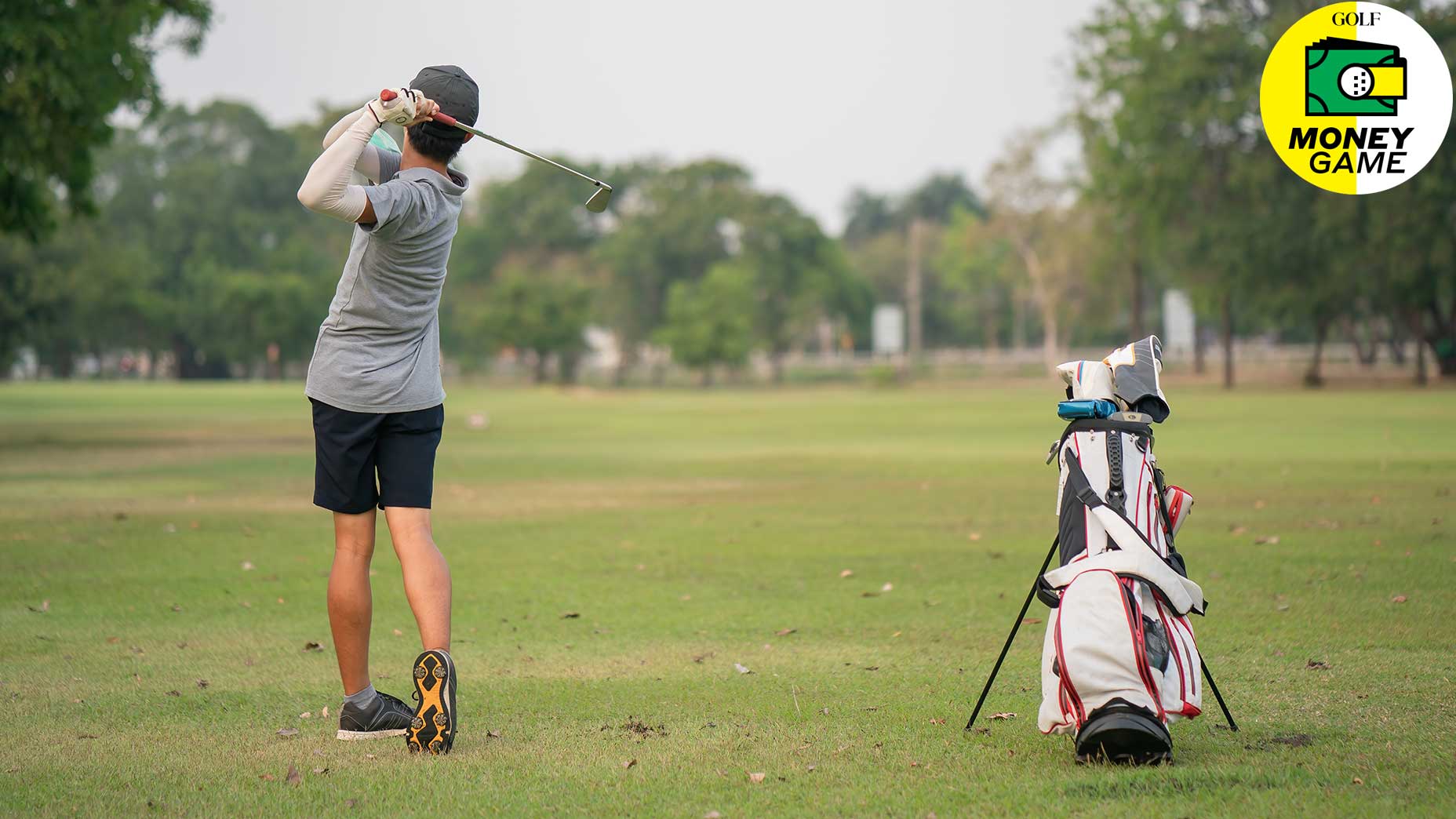Matt Alberti loves golf. He runs a manufacturing company in New Jersey, but he’s the guy who plays any time and everywhere. A couple years back he was walking the practice area at the Korn Ferry Tour’s BMW Charity Pro-Am in search of his playing partner. “The first thing I noticed was everyone was identical,” Alberti says. “Then there was a six-foot-five guy at the other end of the range. He had a different sound to his ball.” That was his pro partner, Brandon Matthews, a bomber with a slew of college victories and one mini-tour win. “At one point in the round he drove a 410-yard par 4,” Alberti recalls of their first meeting in 2018. “But then he hits a 3-iron 310 yards O.B.”
Alberti had been interested in staking a young player who wanted to make it onto the PGA Tour. After watching Matthews hit the ball deep all day, he was intrigued. “I didn’t think I was going to invest in him,” Alberti says, “but we got talking.”
That’s a talk many aspiring Tour pros — particularly those without equipment contracts or deep-pocketed parents to cover their expenses — would love to have.
It can be a serendipitous experience for both sides: A golf nut with ample cash backs a talented young player; a player receives much needed dough to travel, train, live and play without worrying where next week’s caddie fee comes from. These relationships are pretty much essential for anyone who wants to have a go at the pro ranks. Stewart Moore, a former mini-tour player who now works in communications for the PGA Tour, says at least 75 percent of the players trying to make it professionally have backing from friends, family and/or investors.
Money Game: For today’s pros, corporate sponsorships go way beyond dollars and centsBy: Paul Sullivan
What each side gets in return is more complicated. And there is reason for prudence, if not a bit of caution. In general, there are two types of sponsors: one who is just along for the ride (enviable access to golf at a high level) and one who expects a return. Alberti was the latter. He felt Matthews had what it took to win, and in 2018 he drew up a contract. He’d give the young golfer $50,000 a year in exchange for a share of his winnings if he made it to the PGA Tour. Alberti also found Matthews a swing coach and a caddie to give him the best chance.
In the two years since, Matthews hasn’t secured a card, but thanks to a sponsor’s exemption he made his PGA Tour debut at the 2020 Arnold Palmer Invitational. It was a case of one good deed begetting another. Four months earlier, as Matthews stood over a critical eight-foot putt in a playoff at the Argentine Open, a spectator let out a shout in Matthews’ backstroke. The putt slipped away, and so did the win. The fan, it turned out, had Down syndrome, and Matthews’ act of post-tournament kindness to him resulted in the Palmer Invitational largesse.
The history of staking players harkens back to some of the great amateurs of the game. After caddying for Francis Ouimet in his victory over Harry Vardon and Ted Ray, two of Britain’s best, at the U.S. Open in 1913, Eddie Lowery went from short, doughy 10-year-old looper to successful San Francisco car dealer, using his millions to stake amateur players making a run at their pro dreams. Two of Lowery’s most notable protégés were Harvie Ward, a back-to-back U.S. Amateur champion in the 1950s, and Ken Venturi, who went on to win the 1964 U.S. Open. Lowery’s money was the catalyst for The Match in 1956, the iconic showdown that pitted those two young players against a pair of all-time greats, Ben Hogan and Byron Nelson, at Cypress Point. (The pros won, but just barely.) For sure, the tradition of staking golfers has its eccentricities.
In the early 2000s, Jeff Fujimoto, an advisor at 8AM Golf, was on the “golf staff ” of Sidney Frank, the billionaire entrepreneur behind Grey Goose and Jägermeister. “Fuj” and three other scratch golfers played strictly for Frank’s enjoyment — seven days a week, 365 days a year — not on the pro circuit but on courses in and around New York and San Diego.
Because of Frank’s advancing age, “He couldn’t play anymore,” Fuj says. “He just got outside and rode along in a cart. We were his golf team.” And his beneficiaries. The gig turned out to be far more lucrative than a mini-tour payday. Each golfer was given a salary plus living expenses. On the course, they played for $1,000 a day, with birdies worth $100 and eagles $200.
“Even at the time I was thinking, This is the craziest job,” says Fuj.
Stewart Moore, a former mini-tour player who now works in communications for the PGA Tour, says at least 75 percent of the players trying to make it professionally have backing from friends, family and/or investors.
Of course, at the pro level, there are plenty of investments that don’t work out. Lee Godina, the owner of a profitable resin company, was aware of that when he decided to sponsor Jordan Massey, the son of one of his salesmen. Massey had played Division II college golf, struggled on some mini-tours but found his game in the Army, where he won the Armed Forces Championship in 2014.
Godina drew up a three-year contract that paid Massey $100,000 per year plus expenses. In return, Godina would receive a percentage of Massey’s winnings. At the end of the third year, Massey hung up his spikes. “I invested $300,000 and got back maybe $5,000,” Godina says.
Still, he has no regrets. “Competitive golf is fantastic,” he says. “It was the thrill of doing it. I knew it was a long shot. But it’s just too expensive for these players to do it on their own. You need a backer.”
As any Tour player will tell you, those with backers early on — and a few breaks — are the truly lucky ones. Zach Johnson, winner of 12 Tour titles, including the Masters and British Open, says he would have struggled without the group of hometown Iowa benefactors who funded him for years, taking a chance on a golfer who wasn’t even the best on his college team.
“There are some phenoms out there, but there aren’t that many of them,” Johnson says. “The beauty of our game is you have to go out and prove yourself.”
And that he did. After five years, he thanked his backers, padded their pockets and went it alone. He’s since won more than $46 million, but he’s still proud that his angels made a profit on him. “They gave me the freedom to go pursue my dream,” he says. “I would be willing to bet that there were some guys out there who could have had more success if they had been given the freedom I was given.”
Want Paul Sullivan’s advice on all things golf-related in personal finance? Send your questions to moneymailbag@golf.com.
